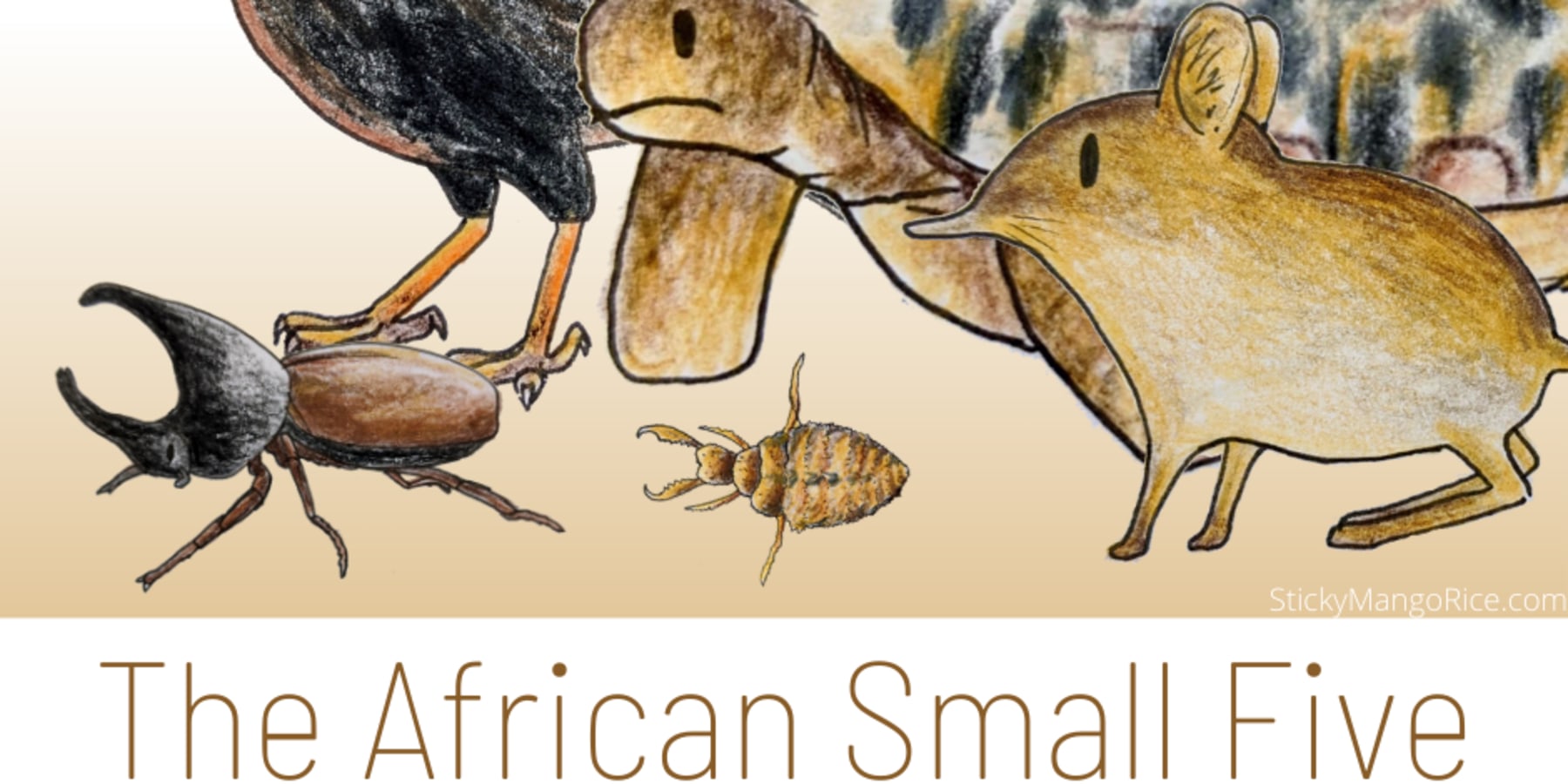
The term "Little Five" is a playful concept that was created as a counterpart to the well-known "Big Five" game animals of Africa. While the Big Five includes the lion, leopard, elephant, rhinoceros, and buffalo, the Little Five refers to a group of smaller creatures that share similarities in name or behaviour. These animals are not officially recognized as a distinct group like the Big Five but are rather a popular concept in safari tourism. The Little Five animals are:
Antlion: The antlion is a small insect that belongs to the family Myrmeleontidae. Its name comes from its predatory behaviour of preying on ants and other small insects. The antlion larvae create conical sand traps to catch their prey.
Elephant shrew: Elephant shrews, also known as sengis, are small insectivorous mammals found in Africa. Despite their name, they are not related to elephants or shrews. They are known for their long noses, which resemble the trunks of elephants.
Rhinoceros beetle: The rhinoceros beetle is a large species of beetle known for its horn-like projection on its head, similar to that of a rhinoceros. They are among the largest beetles in the world and are often found in tropical regions.
Buffalo weaver: The buffalo weaver is a bird species found in Africa. It gets its name from its habit of nesting in acacia trees, often near water sources where buffalos gather. They build large, communal nests that resemble miniature haystacks.
Leopard tortoise: The leopard tortoise is a reptile species found in sub-Saharan Africa. It gets its name from the leopard-like spots on its shell. It is one of the largest tortoise species in the world and is known for its slow and steady movements.
While the Little Five may not have the same level of recognition as the Big Five, they are often included in safari experiences and nature discussions as a fun way to appreciate the diverse wildlife found in Africa.

